
Updated: July 9, 2024
Beating beetles back has become a necessary task added to most gardening routines nowadays. The reality is, for some years they will be very abundant and others less. Their numbers and pressure are cumulative. Effective control and management hinge on a multi-pronged approach to diminish their numbers.
History Of The Japanese Beetle
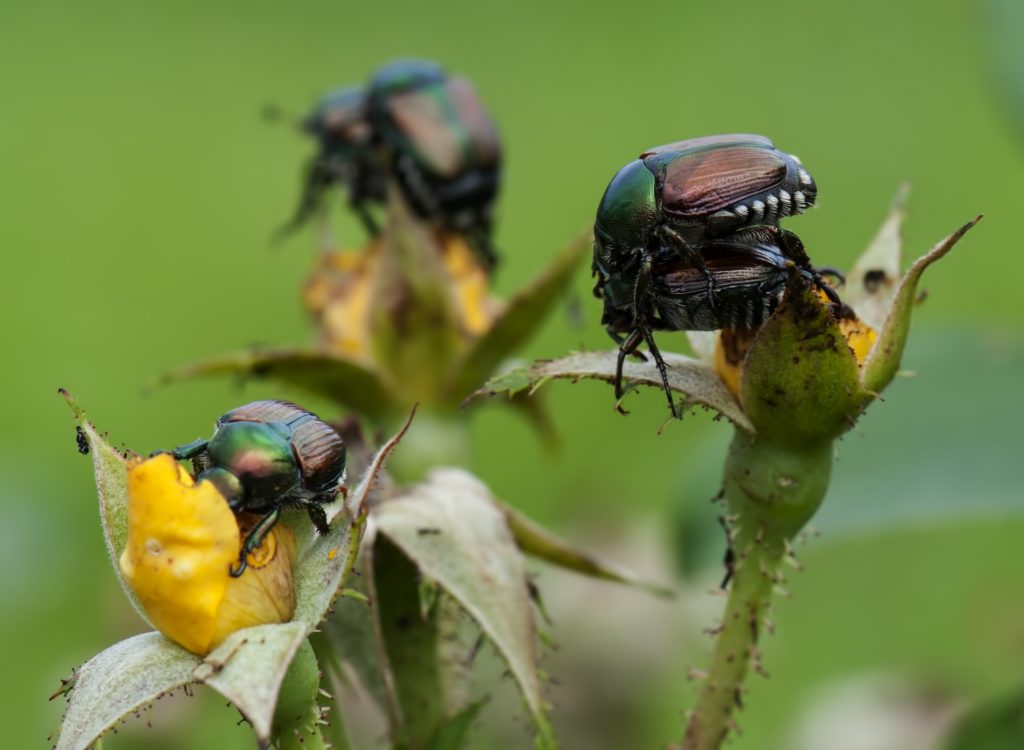
The Japanese Beetle comes from the island of Japan. In the early 1900s, it was illegal to import plants with soil. However, someone broke the law and brought Japanese Iris to the United States with it came some Japanese Beetle larvae. By 1916, nurseries in New Jersey saw Japanese Beetles on their plants. By 1920, the beetles had spread into most of the other states.
How To Identify Japanese Beetles
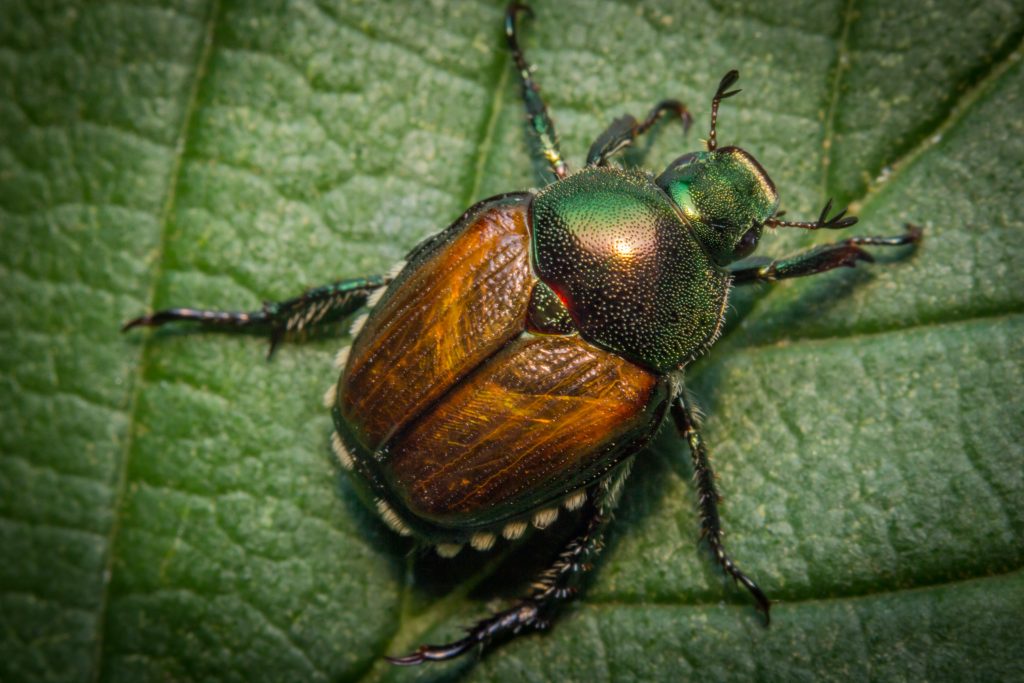
Japanese Beetles have metallic blue-green-colored heads with copper-colored backs. They have small white hairs on the side of their abdomen. The beetles are about a ½ inch in size. In larvae form, they are c-shaped, a white to cream or grey color with a yellow-brown head.
Which Plants Will Japanese Beetles Eat?
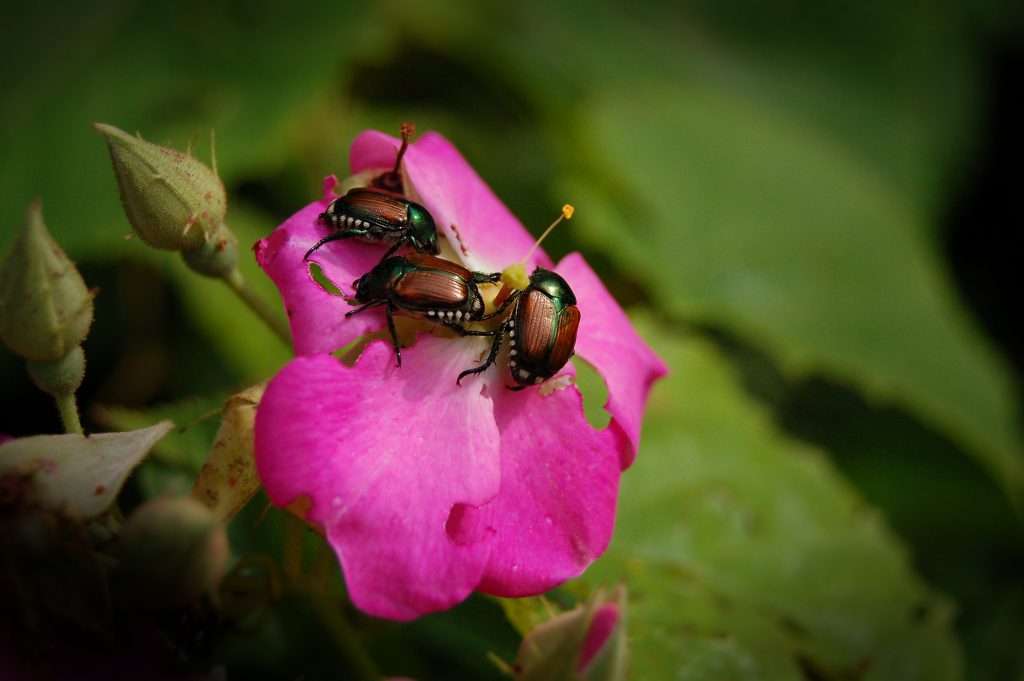
They feed a variety of plants including vegetables, fruit, trees, shrubs, flowers, and crop plants. Some of their favorites are roses, green beans, grapes, and raspberries.
Japanese Beetle: Control
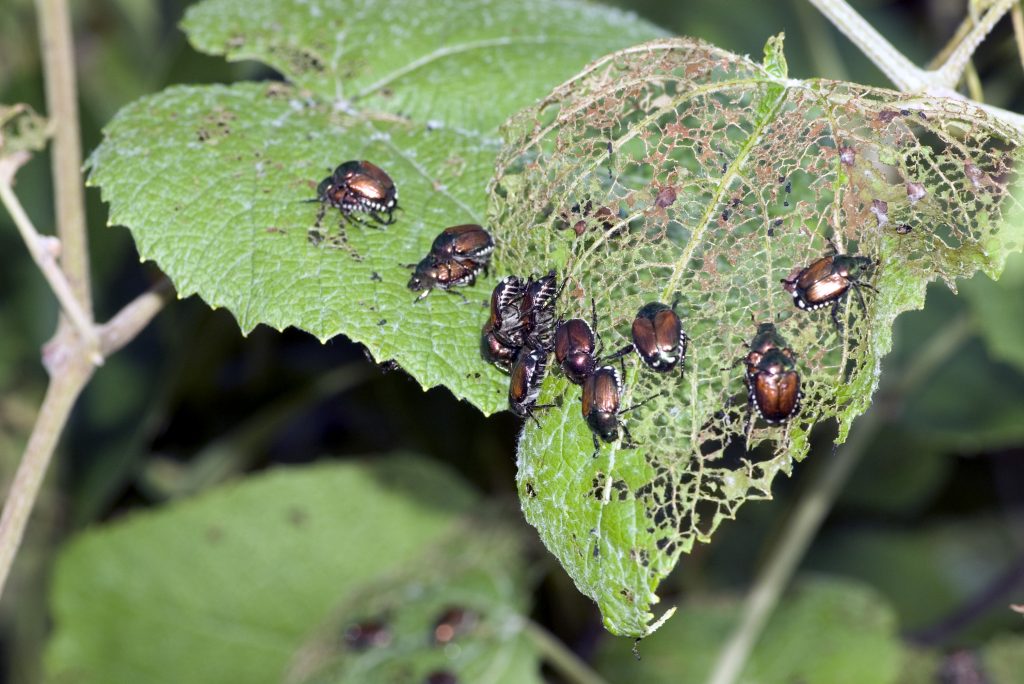
Start monitoring early, mid-June to early July is the best timing. Start management options as soon as adult beetles appear. Getting an early start is your best defense.
Hand Picking
The easiest option is picking them off by hand. Wear gloves and carry a pail of soapy water to deposit the beetles into for disposal later. If this seems too creepy, use a rechargeable home hand vac. When the beetles find attractive plant leaves to feed on, they release a specific pheromone to alert other beetles to come feed. Just a couple of chewing beetles can beget hundreds if not thousands of beetle friends.
Trap Cropping
Trap cropping with plants that Japanese beetles prefer most, is also a good option for control. Borage, white geraniums, evening primrose, and zinnias are highly favored foods and can be planted along property perimeters, far from your other attractive plants. Beetles can be harvested daily from these trap plants, and simply dropped into a coffee can or bucket of soapy water for dumping later.
Japanese Beetle: Prevention
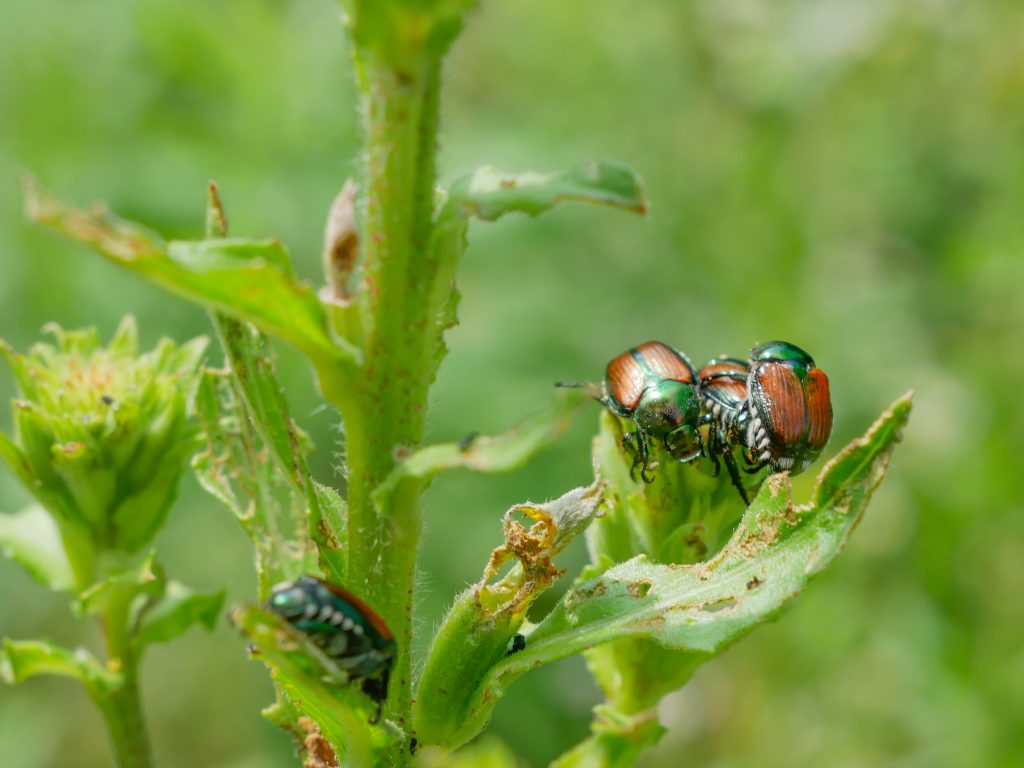
Spraying
You can try spraying your plants with Neem oil or All Seasons oil which can help mask the scent of some favorite plants that beetles are most attracted to.
Irrigation
Japanese beetles are most vulnerable in their larval state. This occurs as grubs feeding near the soil surface, on turf-grass roots. Females will choose to lay their eggs in moist soil, so withholding irrigation during peak egg-laying periods from June through July, can help reduce grub populations.

Netting
In some cases, protecting plants with fine netting or floating row covers is a good option for blooming plants that don’t require pollination. The female beetles only have a few weeks to feed before they die, if they can’t find food in your yard, they’ll move on.
Pesticide
For most effective control, timing is critical. Treating turf areas in spring (March-April) and again in fall (Sept.-Oct.) with Annual™ Grub Beater® can help in controlling larval grubs while they are most vulnerable. Applications of pesticide products outside of these time periods would be wasteful. Another beneficial and safe organic control product is Thuricide®. Its active ingredient is known as Bt or Bacillus thuringiensis which is also a natural stomach interrupter to beetle grubs and other caterpillar pests. Used as a spray or drench, it is safe to use with edible fruits and vegetable crops and it is not harmful to bees or other beneficial pollinators. Applications of Bt should follow the same optimum time periods.

Prevention and control are crucial to keeping Japanese Beetles from spreading. However, it is important to remember, in most cases Japanese Beetle damage is cosmetic only and will not kill a plant.
Other Recommended Reading

- Cicadas Emergence 2024 – Protecting Your Garden & Landscape
- Horticultural Oil For Pest Control
- Rose Pests – Identification & Solutions
- Deer-Resistant Gardening Tips
- 4 Simple Steps For Fall Garden Tool Clean Up

At Jung Seed Co, we strive to be your go-to guide for all your gardening needs. Our YouTube channel The Garden Doctor by Dick Zondag is where he provides gardening tips for all levels of gardeners. When you need reliable gardening advice, turn to the trusted experts at Jung.
View our new catalog online or browse our website for your gardening favorites. To receive info on new products, exclusive deals, and specials, be sure to sign up for our weekly email. Join our Facebook page, to discuss all things gardening!
